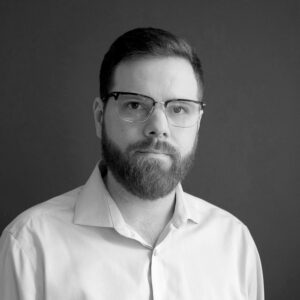As COVID Creeps into Schools, Surveillance Tech Follows
By Mark Keierleber | December 2, 2020
From badges that record students’ every move to air purifiers with ultraviolet “kill chambers,” tracking — and annihilating — the virus in schools becomes tech companies’ pandemic-era pitch.
When a seventh-grader in suburban Cleveland tested positive for the coronavirus in late October, it caused a domino effect across the school community. Twelve children who came in close contact with the student were instructed to quarantine, and the entire seventh-grade class was pushed back into remote learning.
The disruptions had just begun. By mid-November, almost every student at the Wickliffe City School District was sent back to learning from computer screens in their living rooms. Because of “a significant increase in exposures and confirmed COVID-19 cases among our students and employees” that prompted widespread quarantines, the district’s “ability to appropriately staff classrooms is no longer possible,” Superintendent Joseph Spiccia wrote in a letter to parents.
But future virus outbreaks at the Wickliffe district, which educates about 1,500 students, could look a whole lot different. As part of a pilot project that the district began to roll out before Thanksgiving, officials distributed roughly 100 badges to high school students and staff that allow administrators to track their every move as they travel throughout the day between the schools’ hallways and classrooms. Implemented in the name of contact tracing, the bluetooth badges allow administrators to track students for up to a month and identify children who came into close contact with infected classmates. The district plans to give badges to all 430 high school students when they return to in-person learning early next year.
The badges, created by the company Volan Technology, are part of a massive ecosystem of products that have flooded the school-safety market this year as education leaders work to mitigate the pandemic’s enduring disruptions to student learning. The products vary widely, from facial-recognition surveillance cameras that take students’ temperatures and enforce face-mask compliance to air purifiers with ultraviolet lights that purport to annihilate airborne viruses with remarkable efficiency.
Some of the products originated in the health care space before making their way to K-12 campuses, while others were first pitched to educators as a solution to another threat: school shootings.
Though many of the gizmos go above and beyond school reopening recommendations from the Centers for Disease Control and Prevention, they could very well help school leaders mitigate exposure by students and staff to a virus that’s killed more than 268,000 people. But they also provide a dilemma to the leaders of America’s cash-strapped school districts who have to dissect the promising products from the snake oil. For the bulk of the devices, there’s an utter lack of research suggesting they’re effective at keeping kids safe.
“Everybody and their brother and their sister had different ideas” about how to protect kids, said PJ McDonald, headmaster at the Eagle Hill School, a private boarding school in Hardwick, Massachusetts. “There’s just so much on the market and I think there’s a lot of opportunistic people out there.”
The school, which educates about 215 students with learning disabilities, purchased nearly 100 RXAir UV light air purifiers as part of its reopening strategy and stationed them in classrooms, resident halls, dining rooms and other common areas. By filtering air through what the company calls a “kill chamber,” the school says the purifiers are able to eradicate airborne viruses, including the coronavirus.
Many of the devices on the market also present administrators with an age-old debate in the school safety space: How to protect students from legitimate threats without impeding on their civil rights. Student tracking badges, surveillance cameras and contact-tracing cell phone apps have come under significant scrutiny from privacy advocates, who question the products’ effectiveness and accuse them of subjecting youth to over-the-top surveillance.
But company executives and school leaders who’ve bought the products say they are here to stay. Even after a vaccine is released and the pandemic subsides, they said, the products will become part of the post-pandemic landscape in schools. Spiccia, the Wickliffe superintendent, suggested the tracking badges could be helpful for student discipline. If a student doesn’t show up for class, for example, the badges could let administrators know that “she’s down in the cafeteria having a little extra breakfast,” he said.
Several company executives invoked the government’s lasting response to the terrorist attacks on Sept. 11, 2001. Michael Bettua, Volan’s CEO, envisioned a future where his company’s badges help schools react to everything from medical emergencies to fires to student fights.
“Airport security never went away after 9/11 because we can’t let our guard down,” Bettua said. “As travelers, or as parents or as school administrators, I don’t think the need to have something in place ever goes away given how badly we’ve all been affected by this.”
The marketing blitz
In Wickliffe, Spiccia’s introduction to Volan’s tracking badges began with a connection from a former student, who is now the CEO and executive director of a nonprofit membership association for school leaders and software vendors. The executive, who offered an endorsement of Volan’s product, has helped the company gain visibility in several Ohio districts.
Faced with the monumental task of returning students to school buildings, Spiccia said he was impressed by the product’s ability to “pinpoint where a student is at any point in time.” Though the district isn’t yet a customer, Spiccia agreed to launch a pilot project in its high school. While Spiccia characterized the pilot as being voluntary, a Volan spokesperson later said the devices will be distributed to all of the district’s high schoolers, who can opt out if they aren’t willing to participate.
“You can’t argue with the fact that ‘Yes, a student was six feet away,’ or ‘No, the student wasn’t in contact for 15 or more minutes’ because the data sits there right in front of you.” —Joseph Spiccia, superintendent Wickliffe City School District
Volan, which claims to offer the “most accurate contact tracing solution on the market,” allows school administrators access to track the movements of thousands of students in a matter of seconds. The system relies on two pieces of hardware: A network of beacons installed throughout the campus and Bluetooth-enabled badges that students wear around their necks. If a student or educator tests positive for COVID-19, administrators can track their campus movements for up to 30 days and identify others with whom they’ve had close contact. Through an online dashboard, school leaders can identify which students are most at risk of exposure.
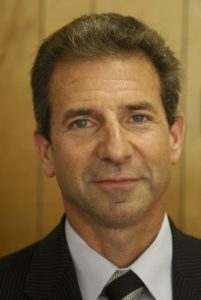
If effective, Spiccia said the devices could allow districts to streamline contact tracing through a data-driven approach that could be more objective in identifying students who were exposed from others who are more likely to be safe. During a time of heightened anxiety, he said the strategy will offer students and parents “a peace of mind.”
“You can’t argue with the fact that ‘Yes, a student was six feet away,’ or ‘No, the student wasn’t in contact for 15 or more minutes’ because the data sits there right in front of you and it’s not an estimate or a guess,” he said.
Bettua said Volan’s badges are priced on a sliding scale based on student enrollment and are offered to schools at a discount for “less than the cost of one hot lunch.” Large districts could pay less than a dollar per student per month for the badges, he said, while smaller districts could be charged as much as $5 per student each month. If the Wickliffe district agrees to implement the product after the pilot, price could become a point of negotiation, Spiccia said. Volan provided him with a price estimate, though he said he couldn’t remember the dollar amount.
“I said ‘I don’t think there’s a public school district in Ohio that would buy this product at that price point,’” he said. “What I said to them is, ‘I’m happy to do the pilot and we’re happy to talk about what the price point should be, you know, and then you can decide from there’” whether to move forward with the sale.
The security company CENTEGIX has been pitching school districts on a similar idea. Since 2018, the company has implemented its wearable panic alert system, CrisisAlert, in 1,200 schools across a dozen states. But when the pandemic shuttered campuses, the company pivoted quickly, said Matthew Stevens, the CENTEGIX CEO. It’s now marketing schools on ContactAlert, which operates similar to Volan’s device and allows administrators to identify people who may have been exposed to the virus through wearable badges. Such wearable surveillance tech isn’t exclusive to K-12 schools; similar devices have also been distributed to college students, Rent-A-Center employees and professional football players.
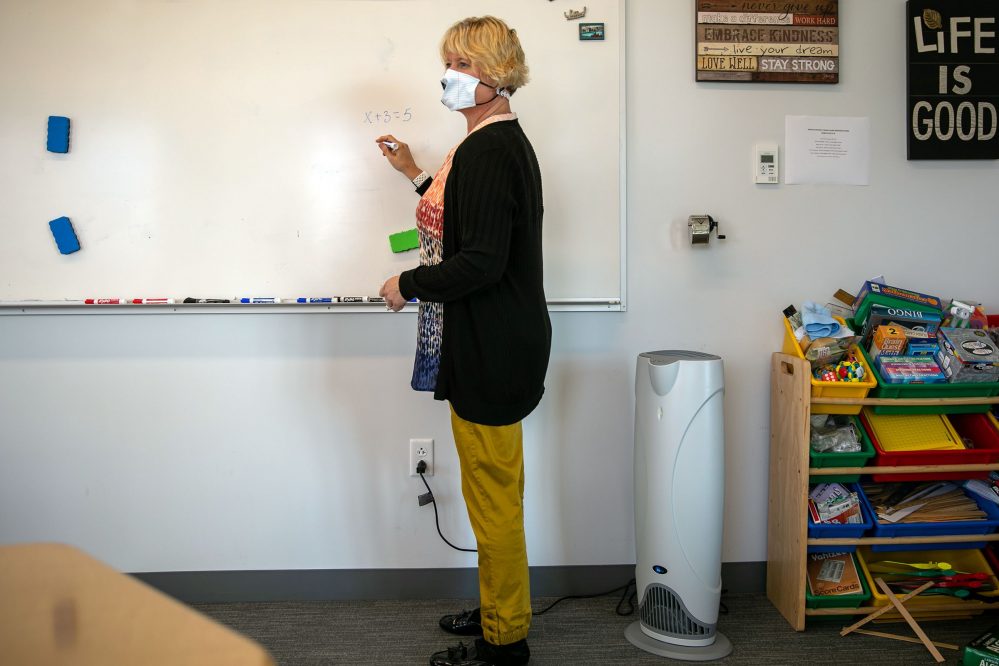
At the Eagle Hill School in Massachusetts, McDonald took a radically different approach. By installing the RXAir UV purifiers, he says they were able to reduce student’s risk of airborne exposure. Vystar Corporation, which owns RXAir, claims the devices destroy 99.9 percent of airborne bacteria and viruses by exposing them to high-intensity ultraviolet lights.
But McDonald and Spiccia are both chasing the same assurance.
“The peace of mind thing is immense,” the headmaster said. McDonald and the company declined to disclose how much Eagle Hill paid for the purifiers, though they’re for sale online for $900 each. A company spokesperson said schools can receive a discount of up to 50 percent, but McDonald said the cost “didn’t really matter to me.”
Though the purifiers may be out of reach for public school districts that face budget cuts because of the pandemic, he said they were critical at his campus where the students, who have disabilities, including dyslexia and attention deficit disorder, require hands-on, in-person instruction. Eagle Hill families are paying $82,500 this year to send their children to the boarding school and $59,100 for the day program.
“We count every penny, but not all of the pennies in the world could add up to what it means” for their ability to reopen, he said.
Each of the devices go above and beyond school-reporting approaches recommended by the CDC, which urges districts to adopt face-mask mandates, modify classroom layouts to promote social distancing, limit large group gatherings and ensure ventilation systems work properly, among other recommendations. Though district partnerships are encouraged, the CDC notes that contact tracing is the responsibility of local health departments and includes interviews, campus visits and a review of K-12 school records to identify people who may have been exposed to the virus.
“When you look at what the leading public health agencies are calling for, they’re not calling for mass surveillance products, they’re not calling for new forms of biometric tracking,” said Albert Fox Cahn, founder and executive director of the Surveillance Technology Oversight Project. “They’re calling for incredibly low-tech measures like consistent hand-washing, social distance and rapid, reliable testing.”
In fact, he argued that some of the high-tech devices could be detrimental to districts’ pandemic response. By investing in expensive products that haven’t been proven effective, educators could find themselves in a position where “we don’t actually have enough resources to invest in the things we need to make schools safe and accessible.”
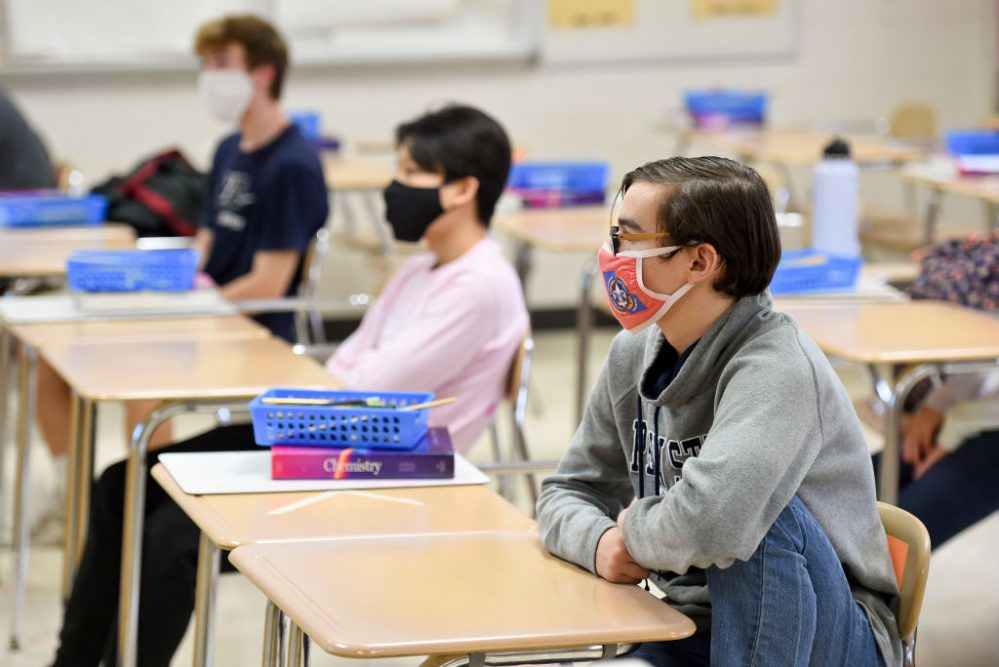
Devices highlight privacy concerns
Despite the marketing tactics employed by some school safety companies, their success in scoring new customers during the COVID-era remains largely unclear. That’s because schools aren’t required to tell parents about the different types of technology that they’re using on campus, said Elizabeth Laird, the senior fellow of student privacy at the Center for Democracy and Technology.
“Because of a lack of transparency, we just don’t quite know,” she said. But interviews with company executives suggest they’ve faced an uphill battle. The Eagle Hill School was the first institution to deploy RXAir campuswide. And while the Wickliffe district is piloting Volan’s tracking badges, the company hasn’t yet made a sale with a school district. Same thing with CENTEGIX: Although the company has had success selling its CrisisAlert tracking badges, its pandemic-era feature ContactAlert has yet to take off.
In October, CENTEGIX agreed to refund the school district in Charlotte, North Carolina, $475,000 to settle a lawsuit after education officials alleged its crisis alert system, installed before the pandemic, was riddled with flaws. School officials spent more than $1 million on the equipment, which often failed to function and occasionally played erroneous emergency messages, according to the Charlotte Observer. Stevens acknowledged the company had “some early deployment issues,” but said the system was used successfully in more than 50 “real-world incidents” at the district.
Still, some districts have shelled out thousands of dollars in search of strategies to keep kids safe. In Fayette County, Georgia, the school district spent more than $500,000 on surveillance cameras with thermal imaging that purport to identify students with elevated temperatures. The district bought the cameras from Hikvision, a Chinese security giant blacklisted by the Trump administration due to alleged human rights abuses and pervasive surveillance of the country’s Muslim minority. Meanwhile in Texas, the Sharyland Independent School District spent more than $175,000 on infrared body temperature terminals from the company SafeCheck USA to screen students for fevers.
“They are high-tech hydroxychloroquine.” —Albert Fox Cahn, founder and executive director, Surveillance Technology Oversight Project.
Some security companies have also found success marketing their products to districts during remote learning. The student surveillance company Gaggle, which monitors students’ online activities in search of concerning behaviors, has boasted more than 100 new partnerships with school districts since March. In some cases, schools have purchased the service with federal CARES Act funding. In Minneapolis, district leaders are paying more than $350,000 this year for the service, according to contracts obtained by The 74 through a public records request.
Cahn, an attorney, noted districts could face federal lawsuits if they deploy tools like Volan’s badges, arguing that asking students “to wear a government-mandated tracking device” could violate their Fourth Amendment protections against unreasonable searches. He also took issue with surveillance cameras that offer thermal scanning to detect people with elevated temperatures — devices that have faced widespread skepticism in part because not all COVID-19 patients exhibit fevers but also because epidemiologists have questioned their effectiveness.
“They are high-tech hydroxychloroquine,” he said, comparing it to the drug hyped by President Donald Trump despite mounting evidence suggesting it is ineffective in treating COVID-19. “They are magical thinking. There is no peer-reviewed evidence that wide-area thermal imaging is able to effectively detect the presence of a fever, let alone diagnose COVID-19.”
As districts spend hundreds of thousands of dollars on air purifying systems equipped with ultraviolet lights, the issue has also become fraught. The U.S. Food and Drug Administration notes that ultraviolet radiation has been used effectively for decades to prevent the spread of bacteria. And while the lights could be effective in slowing the spread of COVID-19, “there is limited published data about the wavelength, dose, and duration of UVC radiation required to inactivate” the virus, the agency noted.
Bryan Stone, a member of Vystar’s board of directors and chief of medicine emeritus for the Desert Regional Medical Center in California, acknowledged the RXAir units are only effective if they’re able to filter enough contaminated air through the “kill chamber.” A smaller device wouldn’t be sufficient in a school auditorium, for example. But he noted a particular problem with UV wands currently being marketed to schools as a way to disinfect surfaces.
“If you’re simply waving an ultraviolet light over a surface, it’s not really going to work because the exposure time isn’t long enough,” he said. “These magic wands with ultraviolet light, if those things were strong enough, they wouldn’t be safe for your skin. They’re not going to be as effective as people think, and then they create a false sense of security.”
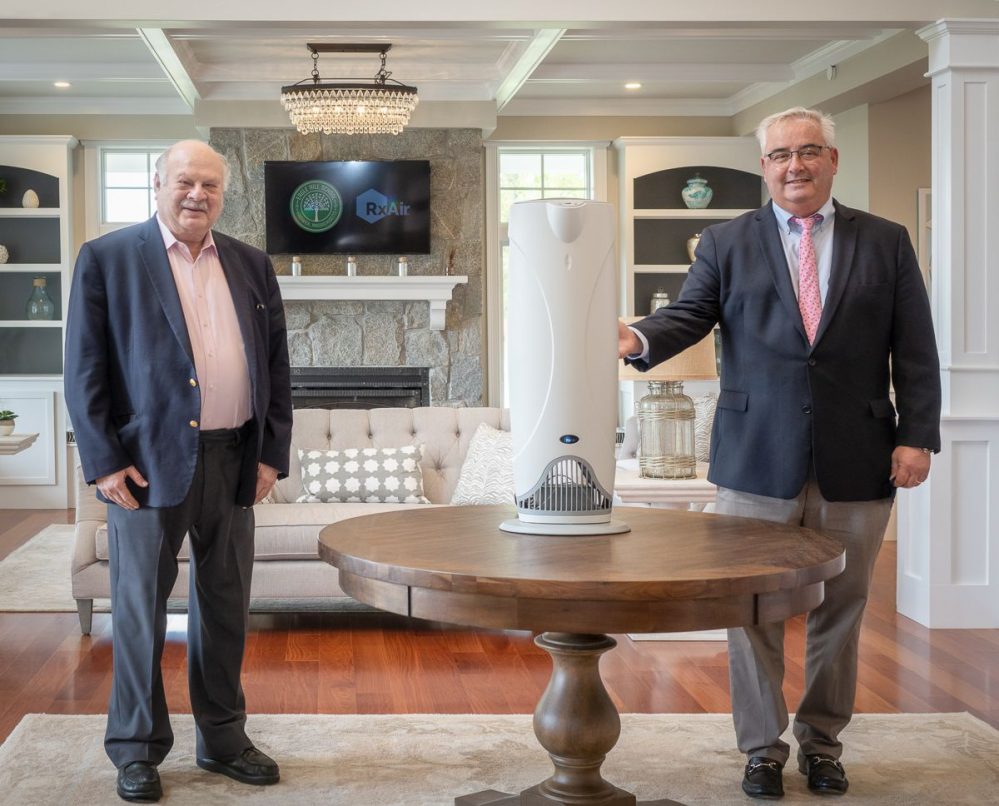
Navigating privacy concerns is also top of mind for company executives. Volan and CENTEGIX offer radically different approaches to student privacy. Bettua said that Volan’s devices don’t store students’ personal information and, unlike phone applications, aren’t able to track students off campus. But Stevens of CENTEGIX said his company doesn’t plan to distribute badges to students.
“We’re doing it only at the staff and teacher level because of privacy concerns,” he said. “We can’t keep people safe if we can’t protect their data and we’re not willing to track children.”
Here to stay
Two hundred miles south of Wickliffe, Volan faced fierce backlash this summer after members of a Columbus suburb found out that students could be subjected to pervasive surveillance in the name of fighting the pandemic.
Through a WIRED Magazine article published in June, parents learned that New Albany-Plain Local Schools was planning to pilot Volan’s badges as students returned to classrooms after months of remote learning. Within 24 hours after the article was published, signs popped up around town blasting the district for violating students’ privacy. District officials’ email inboxes were flooded with messages from concerned parents who weren’t included in their decision to launch the pilot. During a school board meeting, the superintendent apologized for not keeping parents in the loop and tried to dispel concerns that officials sought to surveil kids.
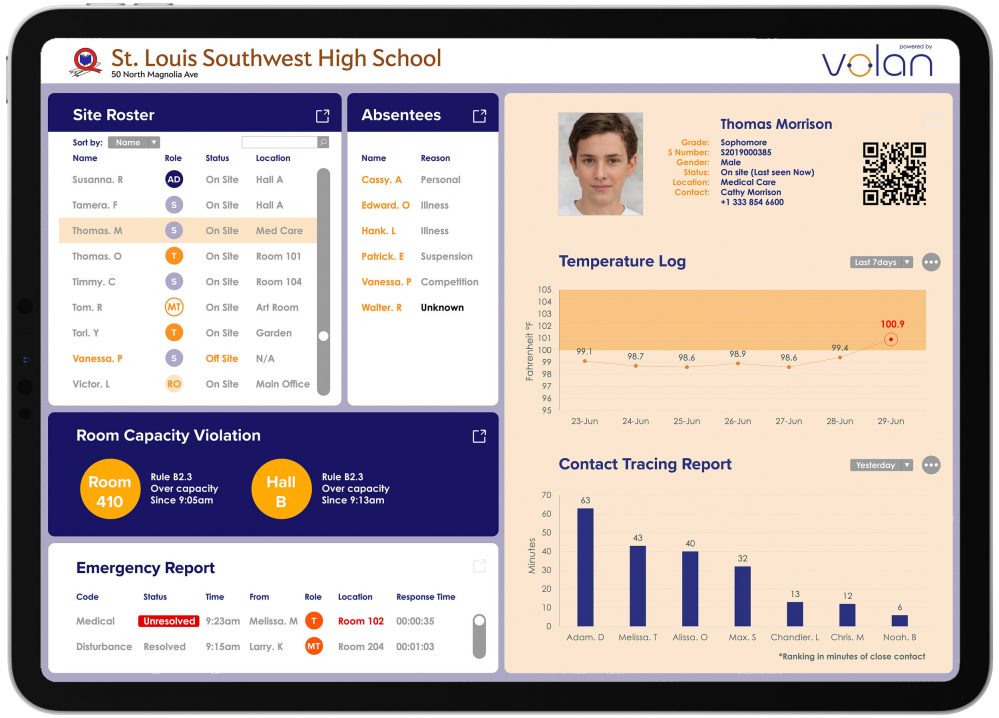
Nonetheless, Bettua said the New Albany district is no longer participating in a pilot of Volan’s technology — and the fallout offered the company a learning opportunity, including the need to better inform parents about how their product works. With schools across the country already equipped with security cameras, he challenged the notion that his company’s badges are a new form of surveillance — “especially when the word actually refers to watching criminals.”
But as the companies look to create products that outlive the pandemic, Cahn, from the surveillance oversight project, worries that district schools could soon leverage students’ location data from Volan and similar products to discipline them.
“Technologies that are capable of tracking student location information and retaining it, those are deeply alarming to me because of the way they can fuel the school-to-prison pipeline,” he said. “Suddenly we’ll see technologies that are being purchased in the name of fighting COVID-19 being weaponized to suspend, expel and even arrest students of color.”
Though Spiccia of Wickliffe doesn’t view Volan’s badges as a disciplinary tool, he didn’t rule out the possibility. And while the high school students can opt out from using the badges during the pilot, he said they’d become a requirement for students districtwide if education leaders decided to adopt them after the trial run. Spiccia is prepared to face significant resistance — at first.
“After the initial pushback, people are going to adapt and deal with it,” he said. “Some people would be angry, and after that anger dissipates, I think people generally will end up complying and falling in line.”
Lead Video: Getty Images
Get stories like these delivered straight to your inbox. Sign up for The 74 Newsletter


